 June 19, 2014 John E. Ross, KD8IDJ, Editor
| ||||||||||
Centennial Convention Friday/Saturday Forums Feature Notable Speakers, Intriguing Topics Amateur Radio's history, public service role, satellite programs, utilization of computer and digital technology, and even its relationship
to the Common Core education standards are on the forum menu Friday and Saturday at the ARRL National Centennial Convention. With such ham radio star power as Riley Hollingsworth, K4ZDH, Martti Laine, OH2BH, Carole Perry, WB2MGP, Gordon West, WB6NOA, and Joe Taylor, K1JT, on the forum schedule, there's something to pique everyone's interest. The Convention, the highlight of the ARRL's 100th anniversary celebration, takes place July 17-19 at the Connecticut Convention Center in Hartford. The forum schedule includes 3 dozen presentations each day between 9 AM and 3 PM, including youth forums and other activities. Among the Friday forums, Chris Codella, W2PA, will talk about the role
of hams in "The Great War" and, later, on how we got our bands, while noted DXer Martti Laine, OH2BH, will relate his 50 years of Amateur Radio history. Alma Ripley will discuss "Amateur Radio and the Common Core Standards." A wide array of technical topics, ranging from HF digital operation and electronics kit building to PIC programming, digital voice, and the LINUX operating system, is offered as well. Tower law and safety will be featured at other forums. Representatives from AMSAT, WX4NHC, and the NCVEC will be on hand to talk about their programs. The Centennial banquet's keynote speaker Friday evening will be FEMA Administrator Craig Fugate, KK4INZ. An ARRL Wouff Hong ceremony will follow later in the evening. Helping to kick things off on Saturday, former FCC Special Counsel Riley Hollingsworth, K4ZDH, will discuss "What We Owe the Amateur The hard part is deciding which forums to attend. The easy part is being on hand at the ARRL Centennial National Convention. There is still time to register! Matt Wilhelm, W1MSW, Named as ARRL Contest Branch Manager Matt Wilhelm, W1MSW, of Williamsburg, Massachusetts, will be the new ARRL Contest Branch Manager. He will start work at ARRL Headquarters on July 3. An active contester and a member of the Yankee Clipper Contest Club and the Hampden County Amateur
Radio Association, Wilhelm has been licensed since 2009 and holds an Amateur Extra class ticket. He became hooked on contesting after the first ARRL Rookie Roundup in April 2010. His expertise -- and contest scores -- have been rising ever since. "I cannot tell you how happy I am to be the next ARRL Contest Branch Manager," Wilhelm said. "I'll be working hard to provide the high-quality support that contest participants have come to expect from the Contest Branch." A native of Dallas, Texas, Wilhelm has an IT background in help desk operations and network security systems management. When not making contest contacts, Wilhelm enjoys mountain biking, home projects, and spending time with his family -- his wife, Elizabeth, and his 2-year-old daughter Ruby. New ARRL Technician Instructor E-Manual Now Available for Download The sixth edition of the ARRL Technician Instructor Manual -- an electronic publication -- now is available for free download by ARRL registered instructors. This latest edition of The ARRL Instructor's Manual offers a course syllabus that addresses all of the topics covered by the FCC question pool that becomes effective on July 1 for the Technician license exam. The syllabus follows the topic presentation sequence in the ARRL student study guide, The ARRL Ham Radio License Manual (3rd ed).
Updated and edited by Ward Silver, N0AX, the new Instructor Manual has been condensed into 18 lesson modules and includes additional suggestions for demonstrations and instructional activities. Silver is the author of all three ARRL license manuals and the Q&A study guides. The ARRL Ham Radio License Manual for students is organized to explain some basic concepts of radio science and electronics at an introductory level, providing sufficient background for students to gain a fundamental understanding of radio technology. It moves from foundation concepts to specific details that build upon those foundations. The student and instructor materials are intended for an in-depth class series running about 20 hours in all. Topics may be selected for classroom discussion and lessons abbreviated and adapted to meet time constraints. Resources for License Instruction also are available on the ARRL website. FCC Substantially Reduces Radio Amateur's Fine for CB Violation The FCC has significantly reduced the fine it imposed earlier this year on an Oklahoma Amateur Extra class radio amateur licensee for operating his Citizens Band radio to interfere with other CBers' transmissions. Orloff Haines, KF5IXX, had been facing a $12,000 fine. In a June 17 Forfeiture Order, the Commission dropped Haines's liability to $1750. "Mr. Haines does not deny that he intentionally interfered with other CB communications," the FCC said in the Forfeiture Order. "Instead, Mr. Haines requests reduction or cancellation of the forfeiture proposed by the Enforcement Bureau because he cannot afford to pay it. Although In May 2013 an FCC agent tracked the source of a continuous carrier on CB channel 19 (27.1850 MHz) to Haines's home in Enid, Oklahoma. Haines was not at home, but his wife showed the agent her husband's CB station, which was transmitting on channel 19. Haines's wife told the FCC agent that her husband's radio was continuously transmitting on channel 19, because other CB operators in the area had been harassing her, the FCC reported in its March 21 Notice of Apparent Liability (NAL). The FCC said the carrier was interfering with CB communication within an approximately 2 mile radius. Prior to May 2013, Haines had received two written warnings from the Dallas FCC office, advising him of the consequences of intentionally interfering with other CB communications. The FCC had added $5000 to Haines's initial $7000 fine, because of what it called his "deliberate disregard for the Commission's requirements and authority" by ignoring the earlier warnings. In its Forfeiture Order, the FCC pointed out that it has rejected inability-to-pay claims in past cases of "repeated or otherwise egregious violations," and it warned Haines that similar violations in the future "may result in significantly higher forfeitures that may not be reduced" due to his financial circumstances. ARRL Field Day 2014 is at Hand, and Everyone is Invited! If you have not already made plans to get on the air for ARRL Field Day 2014, tick-tock, tick-tock. It's just days away, but it's not too late to participate. Field Day 2014 is Saturday and Sunday, June 28 and 29. Field Day is Field Day is primarily a group activity, though, and if you're not yet on the roster to operate from your club's Field Day site, volunteer now! If you don't belong to a club or don't know if there's a Field Day operation setting up in your area, check the Field Day Locator to find one. Clubs welcome new operators, especially if they are willing to take the graveyard (overnight) shift or other less-desirable time slots or if they bring some special talent or expertise to the picnic table -- top-notch CW proficiency, satellite expertise, or antenna skills.
If you'd rather just stay at home, you can operate your own station as is, and work stations in the field, or you can set up to operate from an emergency power source, such as a generator, batteries, or solar panels, and work everyone else. Field Day got its start in the 1930s as an emergency communication exercise, and that tradition continues today. Some stations will be on the air from emergency operations centers. The object is simple: To work as many stations as possible on any and all Amateur Radio bands -- excluding 60, 30, 17, and 12 meters -- and to learn to operate in less-than-optimal conditions. The camaraderie is special, and there's a place for operators at all skill levels -- from newbies and even prospective licensees to grizzled veterans. Find your place at Field Day 2014, and enjoy Amateur Radio to the max! W1AW Centennial Operations Are Now in Alaska and Montana The ARRL Centennial W1AW WAS operations taking place throughout 2014 from each of the 50 states are now in Alaska and Montana. They will relocate at 0000 UTC on Wednesday, June 25 (the evening of June 24 in US time zones), to Illinois (W1AW/9) and Maryland (W1AW/3). During 2014 W1AW will be on the air from every state (at least twice) and most US territories, and it will be easy to work all states solely by contacting W1AW portable operations. Some schedule changes have been made, and the W1AW WAS list has been updated to reflect these. To celebrate the 100th anniversary of the ARRL, the ARRL Centennial QSO Party kicked off January 1 for a year-long operating event in Working W1AW/x from each state is worth 5 points per mode/contact, even when working the same state during its second week of activity. To earn the "Worked all States with W1AW Award," work W1AW operating portable from all 50 states. (Working W1AW or W100AW in Connecticut does not count for Connecticut, however. For award credit, participants must work W1AW/1 in Connecticut.) A W1AW WAS certificate and plaque will be available. The ARRL has posted an ARRL Centennial QSO Party leader board that participants can use to determine how many points they have accumulated in the Centennial QSO Party and in the W1AW WAS operations. Log in using your Logbook of The World (LoTW) user name and password, and your position will appear at the top of the leader boards. Results are updated daily, based on contacts entered into LoTW. Friedrichshafen Hosts 39th Annual International "Ham Radio" Exhibition What some consider Europe's answer to Dayton Hamvention®, the 39th International "Ham Radio" exhibition, gets underway June 27 in Friedrichshafen, on the shores of Lake Constance in southern Germany. Thousands of radio amateurs and electronics enthusiasts "Building things yourself has played an important role in Amateur Radio for a long time," said DARC spokesman Axel Voigt, DO1ELL. "Building your own equipment has been part of Amateur Radio since the beginning. [T]he pioneers of Amateur Radio experimented, built their own equipment, optimized it, and laid the foundations upon which Amateur Radio operates today." The ARRL team will be on hand to greet international visitors and to network with representatives of other national ham radio societies. "We're looking forward to bringing the ARRL Centennial celebration to our members in Europe," said ARRL Marketing Manager Bob Inderbitzen, NQ1R. The League will offer DXCC card checking at its booth -- a service very popular within the international ham radio community. Others on the seven-person ARRL team include ARRL International
Affairs Vice President Jay Bellows, K0QB, ARRL CEO David Sumner, K1ZZ, ARRL Regulatory Information Manager Dan Henderson, N1ND, and Assistant Member and Volunteer Programs Department Manager Norm Fusaro, W3IZ. In its role as International Secretariat for the International Amateur Radio Union (IARU), the ARRL will host a meeting area for IARU officials and friends at the convention. IARU President Tim Ellam, VE6SH/G4HUA, will head the IARU delegation, which will include Vice President Ole Garpestad, LA2RR, IARU Secretary Rod Stafford, W6ROD, and IARU International Representative Hans Zimmermann, F5VKP/HB9AQS "Sister Event" In line with the show's theme, Ham Radio for the first time will share space June 28-29 with Maker World, as a "sister event." The pairing could boost overall attendance, which typically runs between 15,000 and 20,000 visitors. "The event will show off a wide range of individually designed products and ideas for hobbyists and tinkerers," a Ham Radio news release said. "These range from things like 3D printing to case 'modding,' when the appearance of a computer case is [visually] improved or changed, on up to 'upcycling,' in which everyday items which have outlived their useful lives are transformed for a new purpose." Among other activities at Ham Radio, an Amateur Radio transmitter hunt will be held near the fairgrounds, and a balloon mission and a drift buoy project will be launched, both carrying payloads to collect data from the air and water. A ham radio youth camp will offer 100 young people an opportunity to experience the Ham Radio show up close. The DARC will hold its 65th Lake Constance Conference during the weekend of Ham Radio. The Continent's biggest ham radio show will wrap up on June 29. Dr David Wardlaw, VK3ADW, Receives Michael J. Owen, VK3KI, Memorial Award Former IARU Vice President Dr David Wardlaw, VK3ADW, received the Michael J. Owen, VK3KI, Memorial Award during a recent reception at Wireless Institute of Australia (WIA) headquarters. Wardlaw, the second of the two inaugural recipients of the honor, was recognized for his contributions to the International Amateur Radio Union (IARU). Wojciech Nietyksza, SP5FM, received the Michael J. Owen Award last month. IARU President Tim Ellam, VE6SH/G4HUA, who presented the award,
called Wardlaw "an effective representative of both Amateur Radio and the Australian administration at the ITU." Owen, who served as the IARU Region 3 chairman and WIA president, died in 2012. With Owen, Wardlaw was part of Australia's delegation to World Administrative radio Conference 1979 (WARC-79), in which Amateur Radio gained access to 30, 17, and 12 meters. In the 1980s and 1990s Wardlaw served as an IARU Region 3 director before becoming Vice President. Ironically, it was Wardlaw who, years earlier, got a young Michael Owen interested in ham radio. The IARU Administrative Council unanimously chose Nietyksza and Wardlaw last fall as joint recipients of the Owen Award. -- Thanks to Jim Linton, VK3PC Astronaut's Initial ARISS Contact Will Be with Two Schools in Different Countries European Space Agency Astronaut Alexander Gerst, KF5ONO, will answer questions from groups of students in two different countries on June 20, when he picks up the NA1SS microphone for the first time as part of the Expedition 40/41 ISS crew increment. He came aboard the ISS in late May. One group of youngsters will be at Focus Camp in Candriai, Italy, while
the second will be at the Euro Space Center in Belgium. The students in Italy will ask the odd-numbered questions, while the students in Belgium will pose the evens. The Amateur Radio contact with the International Space Station will be conducted via ARISS telebridge station IK1SLD, in northern Italy. Audio to and from both event sites and IK1SLD will be handled via ground-based telecommunication facilities. Signals from the ISS will be audible over Europe on 145.800 MHz FM. The event will be broadcast on EchoLink AMSAT (node 101 377) and JK1ZRW (node 277 208) conference servers, as well as on IRLP Discovery Reflector 9010. Focus Camp is a summertime science camp aimed at children aged 8 to 13. At the Euro Space Center, some 150 youngsters from all over Europe taking part in Mission X, an international education project that encourages children to take part in a challenge, adopting a life style reflecting astronaut training. -- ARISS Amateur Radio Role on Space Station Featured at ISS Research and Development Conference Amateur Radio on the International Space Station (ARISS) got some visibility this week at the third annual ISS Research and Development Conference. The conference, organized by American Astronautical Society (AAS) in cooperation with the Center for the Advancement of Science in Space and NASA, wrapped up June 19 in Chicago. ARISS International Chairman and AMSAT Vice President for Human Spaceflight Frank Bauer, KA3HDO, was the lead presenter for a program compiled by members of the ARISS US team -- which ARISS is the first and longest continuously running educational outreach program involving the International Space Station. The first ARISS school contact took place in late 2000, and nearly 900 such Amateur Radio contacts have taken place since then. Preparation for the ARISS experience motivates both students and teachers to further their educations. Educators involved in an ARISS event can learn about electronics and wireless technology through the hands-on training provided in an ARRL Teachers Institute on Wireless Technology session -- several are held each year. In similar fashion, youngsters preparing for a contact with an ISS crew member may learn about radio waves, space technology, science experiments
on board the ISS, geography, and the space environment. Some 15,000 students are touched directly by an ARISS contact each year, and many more become aware the program and its benefits either directly or via news media coverage resulting from an event. The ARISS presentation at this week's AAS conference provided some historical background on the ARISS program, described the international volunteer team responsible for making program a success, and presented an overview of the process for schools to apply for an ARISS school contact. It also explained how the ARISS team partnered with NASA Education Office's Teaching from Space program to engage schools and students. It also described some of the educational outcomes from ARISS, including data and feedback from schools, students, and organizations. In addition to inspiring an interest in science, technology, engineering, and math (STEM) curricula and careers, ARISS offers an opportunity for Amateur Radio experimentation and for evaluating new technologies. Read more. -- Thanks to The American Astronautical Society via AMSAT News Service Swiss 60 Meter Beacon Now on the Air Although radio amateurs in Switzerland do not yet have access to the 60 meter band, the Sursee Amateur Radio Club has received authorization to operate an experimental beacon in grid square JN47be under the call sign HB9AW. The 5291 kHz beacon, which went live on June 1, is primarily to study 60 meter propagation within Switzerland.
The antenna is a half-wave NVIS-type dipole with its feed point 0.12 λ above ground and its ends slightly lower. A reflector is set beneath the dipole. "We deliberately chose this high-angle radiating antenna to study propagation conditions in Switzerland," the club said on its website, adding, "Conditions for DX contacts are for now only of secondary interest." Past Wyoming Section Manager Robert W. Williams, N7LKH, SK Past Wyoming SM Bob Williams, N7LKH (ex-WB6ZAK), of Wapiti, He was one of the longest-licensed -- if not the longest-licensed -- radio amateurs in Wyoming. According to ARRL Rocky Mountain Division Vice Director Dwayne Allen, WY7FD, Williams designed the guidance system for the Titan missile, which became the guidance system for the Apollo/Saturn rockets. Survivors include his wife Mary, KF7MC. A Century of Amateur Radio and the ARRL Continuing our look at ham radio in the early 1950s, we see that QST reported regularly on states that offered call sign license plates for motor vehicles. Just a handful of states offered call sign plates at first, but the idea gained momentum as more and more states joined in. Ham clubs -- or groups of ham clubs -- would lobby their state legislators to introduce bills requesting a new law. One notable example was Mississippi, where an eight-member Amateur Radio club lobbied successfully, leading to a new state law allowing Amateur Radio call sign tags! With the help and advice of the ARRL, governments at the federal, state, and local levels started looking at ham radio's role in Civil Defense. The idea was to get a CD organization in place before an emergency, rather than waiting until afterward (as happened in World War II). By this time, the value of hams in providing emergency communication had been demonstrated to and appreciated by government agencies all over, so the ARRL's role was to get things operating smoothly while in the planning stages, rather than having to make a "hard sell."
The 1950s were, of course, the time of the "Cold War" and the threat of all-out nuclear war. Seattle, Washington, was the scene of a massive "A-Bomb Test," to test all aspects of emergency preparedness, should a nuclear device hit the city, and the Amateur Radio Emergency Corps -- as ARES was known in those days -- was a major asset during the test. On a related note, QST carried several articles on radiological monitoring during the early 1950s. Following World War II, the number of private automobiles in the country increased by leaps and bounds, as vehicle production shifted from military to civilian needs, and as the populace became more affluent and more mobile. In 1938, about 1.7 million American cars were built; in 1953, more than 6 million. As a result, QST published many articles on mobile receiving converters, mobile transmitters (single-band and bandswitching), and mobile antennas -- particularly multiband antennas. Other areas that received attention in QST included VHF topics, the Military Affiliate (now "Auxiliary") Radio System (MARS), huge rotary arrays for 10 meters, antennas for VHF/UHF, RTTY, HF receivers and transmitters, and electronic keyers. The ugly face of zoning restrictions first appeared in the 1950s. The ARRL got involved in helping hams wage legal battles against overly restrictive community limits on antenna and tower heights -- or, in some cases, complete prohibitions of antennas. These cases were reported in QST as they developed. Happily, the radio amateurs always won complete or partial victories in the court cases, thereby setting precedents for future battles of a similar nature. -- Al Brogdon, W1AB In Brief...
The K7RA Solar Update The daily sunspot number rose dramatically during this reporting period, when it increased to 276 on June 13, but 2 days later it was back below 100. The resulting weekly average for June 12-18 (141) was actually down 2.3 points from the previous 7 days. The average daily solar flux was down 11.7 points to 134.7. Predicted solar flux has been weakening lately, and near-term flux ARRL Field Day is June 28-29, when the predicted flux value is 120. This is the highest predicted flux value for those 2 days since May 25, when it was also 120. Predicted planetary A index is 8 on June 19, 5 for June 20-21, 8 on June 22, 5 for June 23 through July 10, 8 on July 11, 5 on July 12, and 10, 8, 8, and 5 for July 13-16, respectively. This weekly "Solar Update" in The ARRL Letter is a preview of the "Propagation Bulletin" issued each Friday. The latest bulletin and an archive of past propagation bulletins is on the ARRL website. In tomorrow's bulletin look for an updated forecast and reports from readers. Send me your reports and observations! Just Ahead in Radiosport
Visit the Contest Calendar for details. Upcoming ARRL Section, State and Division Conventions and Events
Find conventions and hamfests in your area. ARRL -- Your One-Stop Resource for
Subscribe to...
Free of charge to ARRL members...
Find us on Facebook. Follow us on Twitter.
| ||||||||||
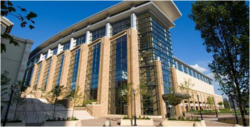
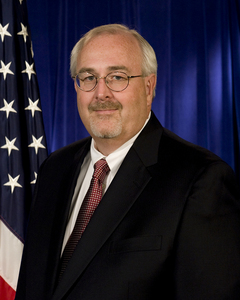
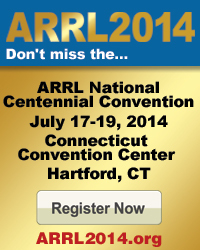
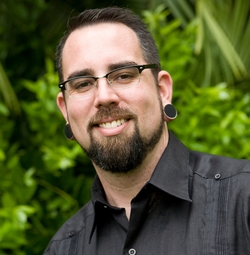
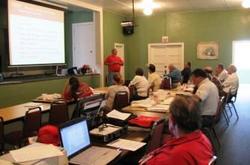 The Instructor Manual is available in four sections for online download, and it includes PowerPoint modules to enhance classroom presentation. The Teacher's Guide to Amateur Radio Instruction by Pete Kemp, KZ1Z, is incorporated within the Instructor Manual as well. Users may download each section, each lesson, or each PowerPoint module as needed.
The Instructor Manual is available in four sections for online download, and it includes PowerPoint modules to enhance classroom presentation. The Teacher's Guide to Amateur Radio Instruction by Pete Kemp, KZ1Z, is incorporated within the Instructor Manual as well. Users may download each section, each lesson, or each PowerPoint module as needed. we do not cancel the fine, we reduce the monetary penalty based on Mr. Haines's documented inability to pay."
we do not cancel the fine, we reduce the monetary penalty based on Mr. Haines's documented inability to pay."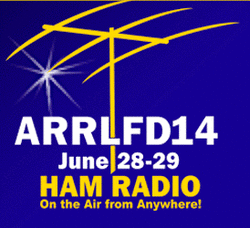 the year's most popular operating event, and more than 35,000 radio amateurs will be setting up stations -- sometimes multiple stations -- in the field, at campsites, in public parks, and even on their decks or in their backyards to get in on the fun. Think of it as the first weekend of Amateur Radio's summer. Last year, more than 2500 stations submitted entries.
the year's most popular operating event, and more than 35,000 radio amateurs will be setting up stations -- sometimes multiple stations -- in the field, at campsites, in public parks, and even on their decks or in their backyards to get in on the fun. Think of it as the first weekend of Amateur Radio's summer. Last year, more than 2500 stations submitted entries.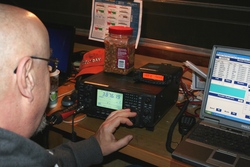
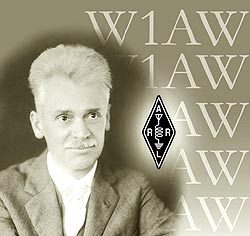 which participants can accumulate points and win awards. The event is open to all, although only ARRL members and appointees, elected officials, HQ staff and W1AW are worth ARRL Centennial QSO Party
which participants can accumulate points and win awards. The event is open to all, although only ARRL members and appointees, elected officials, HQ staff and W1AW are worth ARRL Centennial QSO Party 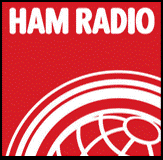 will converge on the Messe Friedrichshafen convention center and surrounding fairgrounds for the event. Some 200 exhibitors and organizations from more than 2 dozen countries, including the ARRL, will be represented in the exhibit hall. The Deutscher Amateur Radio Club (DARC) has chosen "Creative Amateur Radio -- Build It Yourself" as the theme for this year's show.
will converge on the Messe Friedrichshafen convention center and surrounding fairgrounds for the event. Some 200 exhibitors and organizations from more than 2 dozen countries, including the ARRL, will be represented in the exhibit hall. The Deutscher Amateur Radio Club (DARC) has chosen "Creative Amateur Radio -- Build It Yourself" as the theme for this year's show.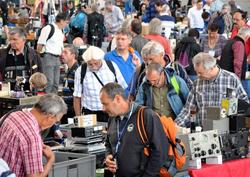
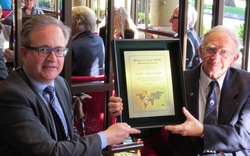
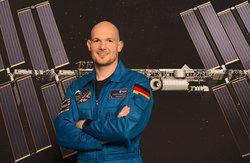
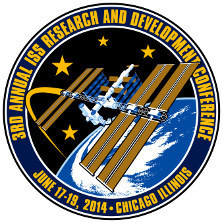 included ARISS International Secretary and ARRL Delegate Rosalie White, K1STO, ARRL Education Services Manager Debra Johnson, K1DMJ, and E. Mike McCardel, KC8YLD, of AMSAT. The presentation, "ARISS -- Inspiring and Educating Youth through Direct Connections with the ISS Crew," focused on ARISS and its role in education.
included ARISS International Secretary and ARRL Delegate Rosalie White, K1STO, ARRL Education Services Manager Debra Johnson, K1DMJ, and E. Mike McCardel, KC8YLD, of AMSAT. The presentation, "ARISS -- Inspiring and Educating Youth through Direct Connections with the ISS Crew," focused on ARISS and its role in education.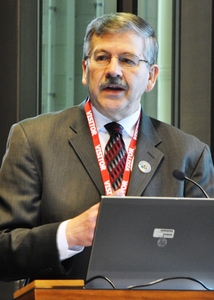
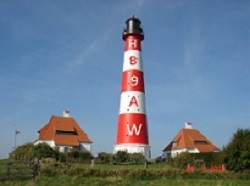 The new beacon will transmit HB9AW in CW at 10 W, followed by five dashes, with the power lowered with each dash. The first dash will be at 10 W, the second at 5 W, the third at 1 W, the fourth at 100 mW, and the fifth at 10 mW (all power levels in ERP). The beacon will transmit every 5 minutes, starting at the top of the hour.
The new beacon will transmit HB9AW in CW at 10 W, followed by five dashes, with the power lowered with each dash. The first dash will be at 10 W, the second at 5 W, the third at 1 W, the fourth at 100 mW, and the fifth at 10 mW (all power levels in ERP). The beacon will transmit every 5 minutes, starting at the top of the hour.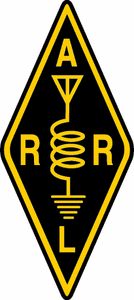 Wyoming, died June 8 following a lengthy illness. He was 89. Williams served as Wyoming's Section Manager from April 1997 until March 2003, when he decided not to seek another term.
Wyoming, died June 8 following a lengthy illness. He was 89. Williams served as Wyoming's Section Manager from April 1997 until March 2003, when he decided not to seek another term.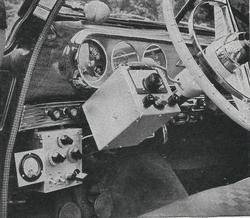
 Dayton Hamvention Attendance Up Slightly: Dayton Hamvention® has announced on its website that 24,873 people turned out for Hamvention 2014. That was up slightly from 2013, when 24,542 attended the annual, 3-day international gathering. Hamvention 2014 was a Regional ARRL National Centennial Event. Charles Kaiser, KD8JZR, was the 2014 general chairman. The Dayton Amateur Radio Association (
Dayton Hamvention Attendance Up Slightly: Dayton Hamvention® has announced on its website that 24,873 people turned out for Hamvention 2014. That was up slightly from 2013, when 24,542 attended the annual, 3-day international gathering. Hamvention 2014 was a Regional ARRL National Centennial Event. Charles Kaiser, KD8JZR, was the 2014 general chairman. The Dayton Amateur Radio Association (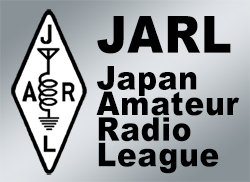 JARL Has a New President: The Japan Amateur Radio League (
JARL Has a New President: The Japan Amateur Radio League (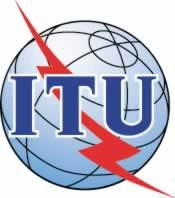 ITU Handbook on Amateur and Amateur-Satellite Services Available: The 2014 International Telecommunication Union (
ITU Handbook on Amateur and Amateur-Satellite Services Available: The 2014 International Telecommunication Union (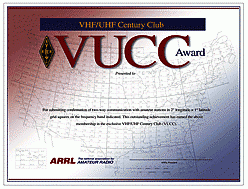 W1AW/0 QSYs Waaaay Up to Earn VUCC on the Microwaves While W1AW was in Minnesota as part of the
W1AW/0 QSYs Waaaay Up to Earn VUCC on the Microwaves While W1AW was in Minnesota as part of the 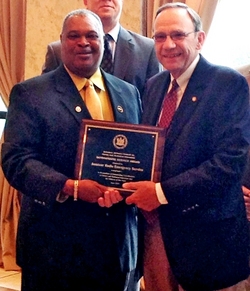 Delaware ARES Team Receives State Council Award: Sussex County, Delaware, ARES has received an Outstanding Service Award from the Delaware Advisory Council on Career and Technical Education (DACCTE). Sussex County SEC and Delaware SM-elect Bill Duveneck, KB3KYH (right in photo) headed a delegation to Dover on June 11 to receive the award from DACCTE Chairman Samuel Lathem. The award goes to businesses, individuals, and organizations that provide exemplary service and contributions to the field of Career and Technical Education and the citizens of Delaware. Recipients are nominated by leaders from business, industry, and education, and are honored for the significant and positive contributions they have made. Nominating Sussex ARES was Joseph Booth, a community leader and staff member of Sussex Technical High School, in recognition of the group's continued support of the school's Amateur Radio club, K3STR, and student mentorship. The award also recognized the role that ARES played in arranging the donation of a fully equipped communications van to the school. -- Thanks to Herb Quick, KF3BT
Delaware ARES Team Receives State Council Award: Sussex County, Delaware, ARES has received an Outstanding Service Award from the Delaware Advisory Council on Career and Technical Education (DACCTE). Sussex County SEC and Delaware SM-elect Bill Duveneck, KB3KYH (right in photo) headed a delegation to Dover on June 11 to receive the award from DACCTE Chairman Samuel Lathem. The award goes to businesses, individuals, and organizations that provide exemplary service and contributions to the field of Career and Technical Education and the citizens of Delaware. Recipients are nominated by leaders from business, industry, and education, and are honored for the significant and positive contributions they have made. Nominating Sussex ARES was Joseph Booth, a community leader and staff member of Sussex Technical High School, in recognition of the group's continued support of the school's Amateur Radio club, K3STR, and student mentorship. The award also recognized the role that ARES played in arranging the donation of a fully equipped communications van to the school. -- Thanks to Herb Quick, KF3BT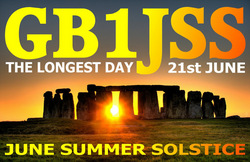 Summer Solstice on June 21 Inspires UK Special Event Station: Special event station
Summer Solstice on June 21 Inspires UK Special Event Station: Special event station 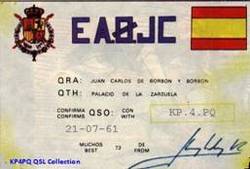 Special Spanish Prefixes to Mark Change of Monarch: To mark the passing of the passing of the crown June 18 from King Juan Carlos, EA0JC, to his son, Felipe VI, Spanish Amateur Radio operators may use special prefixes between June 18 and September 18. EA stations may use the AM0# prefix, EB operators may use the AN0# prefix, and EC hams may use the AO0# prefix during the 3-month period. For example EA9CD would be AM09CD, EB7DX would operate as AN07DX, and EC1KR would be AO01CR. -- Thanks to The Daily DX
Special Spanish Prefixes to Mark Change of Monarch: To mark the passing of the passing of the crown June 18 from King Juan Carlos, EA0JC, to his son, Felipe VI, Spanish Amateur Radio operators may use special prefixes between June 18 and September 18. EA stations may use the AM0# prefix, EB operators may use the AN0# prefix, and EC hams may use the AO0# prefix during the 3-month period. For example EA9CD would be AM09CD, EB7DX would operate as AN07DX, and EC1KR would be AO01CR. -- Thanks to The Daily DX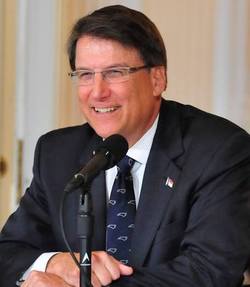 North Carolina Governor Proclaims July "Amateur Radio Recognition and Appreciation Month:" North Carolina Governor Pat McCrory (photo) has proclaimed July as "Amateur Radio Recognition and Appreciation Month." Among other things, the governor recognized the ARRL's Centennial this year. -- Thanks to Woody Woodward, K3VSA
North Carolina Governor Proclaims July "Amateur Radio Recognition and Appreciation Month:" North Carolina Governor Pat McCrory (photo) has proclaimed July as "Amateur Radio Recognition and Appreciation Month." Among other things, the governor recognized the ARRL's Centennial this year. -- Thanks to Woody Woodward, K3VSA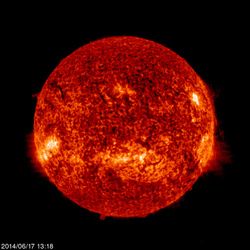 values are predicted at 110 on June 19, 105 for June 20-22, 100 for June 23-24, back to 105 for June 25-26, 120 for June 27 through July 6, 115 for July 7-12, and peaking at 130 for July 13-19.
values are predicted at 110 on June 19, 105 for June 20-22, 100 for June 23-24, back to 105 for June 25-26, 120 for June 27 through July 6, 115 for July 7-12, and peaking at 130 for July 13-19.







